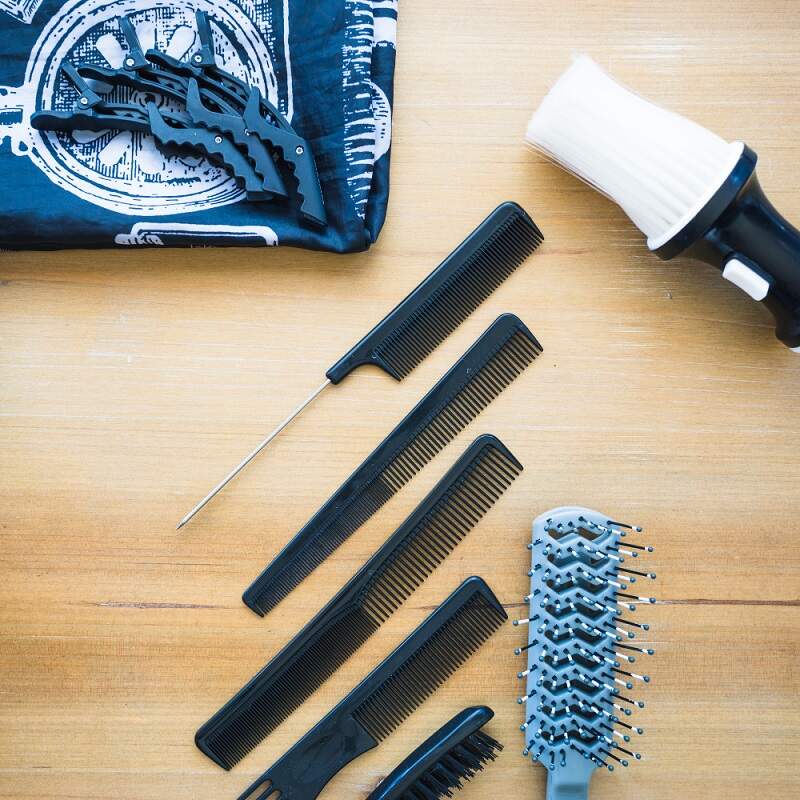DIY Hair Extensions: Step-by-Step Guide and Pros and Cons
July 27,2023
Hair extensions are a fantastic way to instantly transform your look. While getting them done professionally can be expensive, there are DIY methods like halo or flip-in extensions that can be done easily at home. In this blog post, we will share step-by-step tips and tutorials on how to create and install your own hair extensions. Additionally, we will discuss the advantages and disadvantages of these DIY approaches.
1. Understanding Different DIY Hair Extension Methods
Before we dive into the step-by-step guide, it's important to understand the two popular DIY hair extension methods: halo extensions and flip-in extensions.
- Halo Extensions: This method involves a weft of hair attached to a clear nylon string. The string creates a halo-like shape and comfortably sits on top of your head, secured by your natural hair.
- Flip-In Extensions: Flip-in extensions are similar to halo extensions, but they also have clips attached to the weft. The clips help to tightly secure the extensions to your natural hair, creating an invisible fit.
2. Materials Required
To complete these DIY methods, you will need the following materials:
- Hair extensions (choose human hair for a natural look)
- Clear nylon string (for halo extensions)
- Clips (for flip-in extensions)
- A comb, hair ties, and bobby pins
- Scissors (to trim the extensions if needed)

3. Step-by-Step Guide on Creating and Installing Hair Extensions
a. Preparing your hair:
- Start with clean and dry hair. Remove any tangles and knots using a comb.
- Depending on the method you choose, pull your natural hair back into a ponytail (for halo extensions) or create a parting (for flip-in extensions).
b. Halo Extensions:
- Measure the nylon string by placing it around your head, from ear to ear. Cut it to the desired length, leaving extra for adjustment.
- Sew or glue the weft of hair onto the nylon string, making sure it is evenly distributed.
- Place the halo on top of your head, positioning it just below the hairline. Adjust the string's length to ensure a snug fit.
- Use bobby pins to secure the ends of the string for added stability.
- Release the top section of your hair, carefully covering the halo. Style as desired.
c. Flip-In Extensions:
- Measure the extension weft against your head, ensuring it fits snugly from ear to ear.
- Attach clips to the weft at equal intervals, making sure they all face the same direction.
- Create a parting where you want to place the extensions.
- Open the clips and secure them to your natural hair, starting from the bottom and working your way up.
- Repeat the process on each side to achieve even distribution.
- Blend your natural hair with the extensions using a comb or your fingers. Style as desired.
4. Advantages and Disadvantages of DIY Hair Extensions
Advantages:
- Cost-effective alternative to professional hair extensions.
- Can be easily done at home without the need for salon appointments.
- Allows you to add length and volume to your hair instantly.
- Non-damaging to your natural hair if installed and removed properly.
Disadvantages:
- Requires practice to perfect the installation process.
- Limitations in terms of intricate styling or color matching.
- May not be as secure as professionally installed extensions.
- Extra care and maintenance are needed to prolong the lifespan of DIY extensions.
Conclusion
DIY hair extensions, such as halo or flip-in extensions, offer an affordable and convenient way to achieve the hair of your dreams. By following our step-by-step guide, you can have stunning results without breaking the bank. However, it's important to be aware of the pros and cons before diving into the DIY world of hair extensions. Happy styling!
If you are interested in hair extensions, please do not hesitate to contact with us!